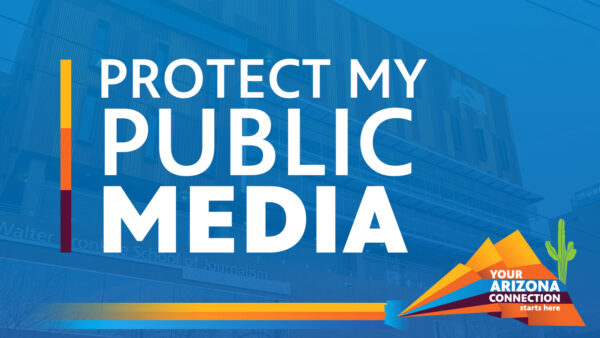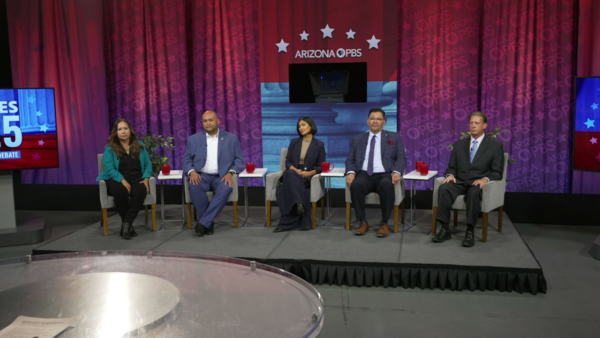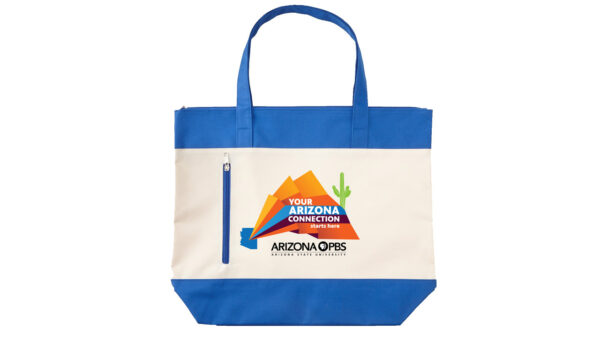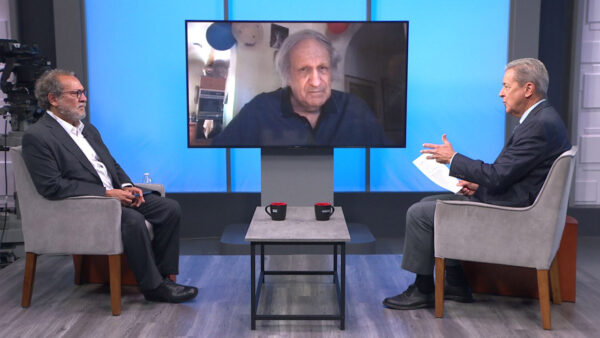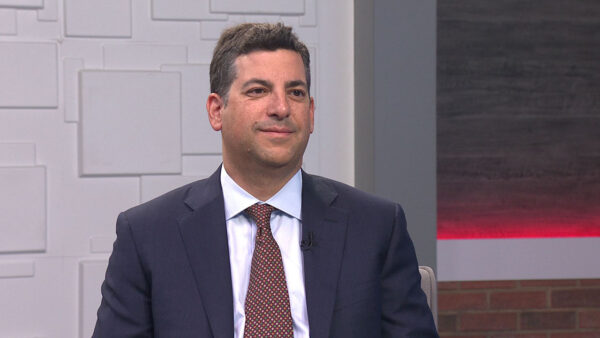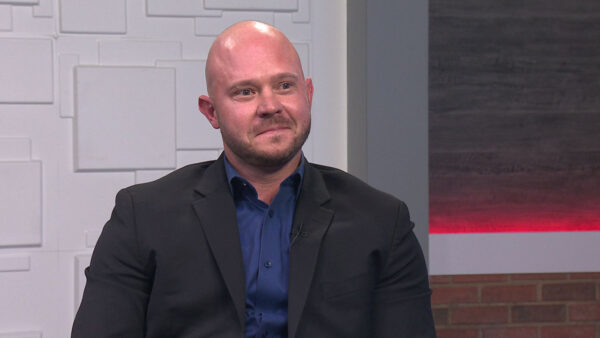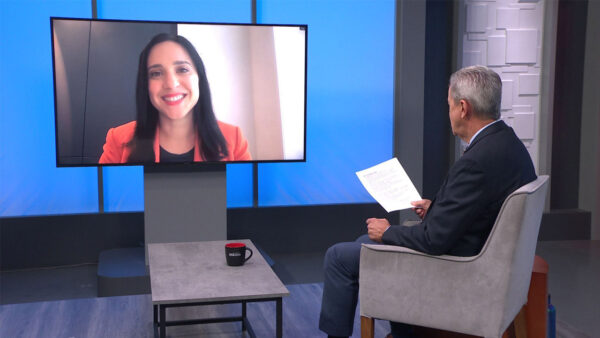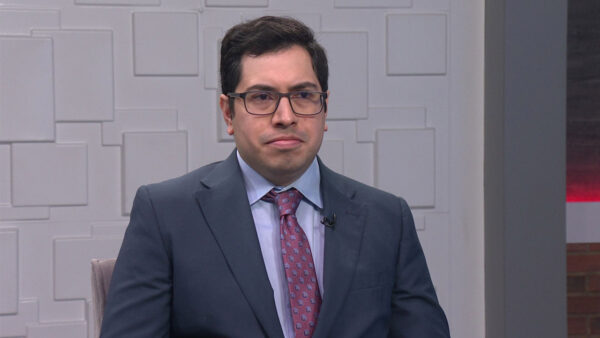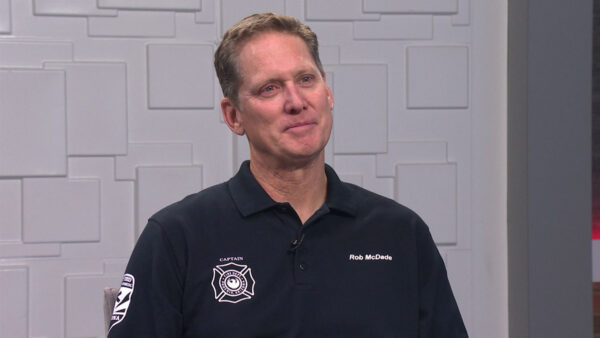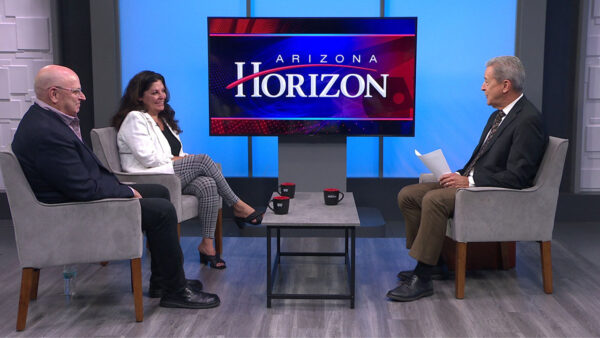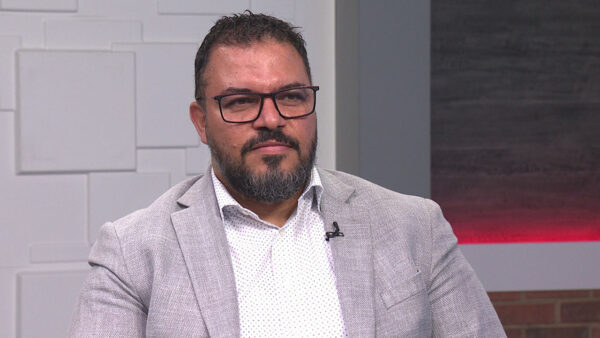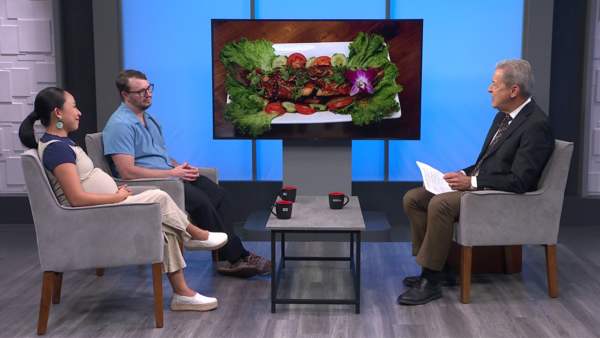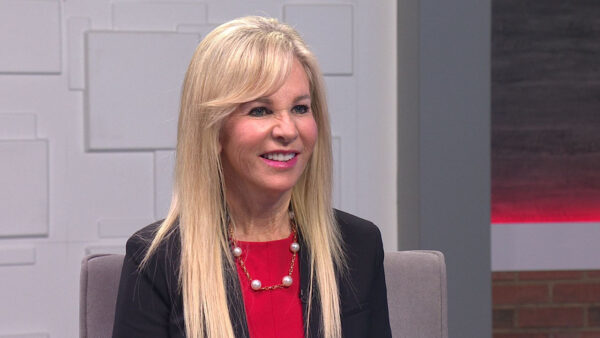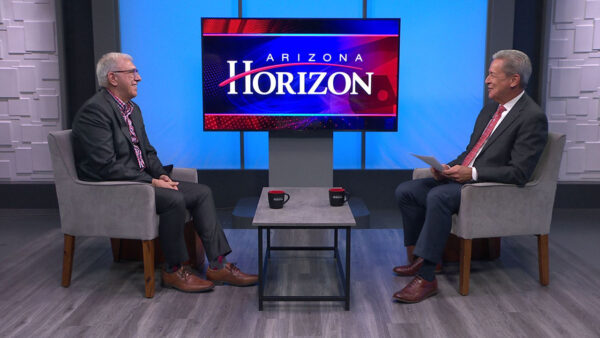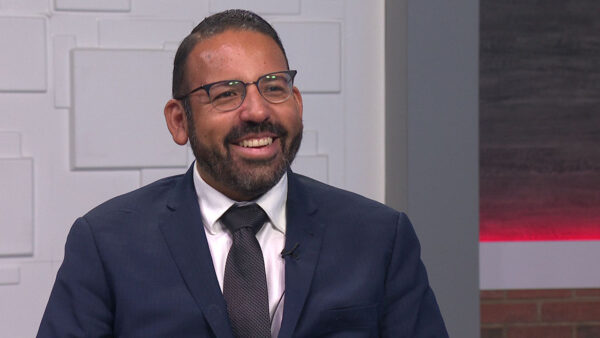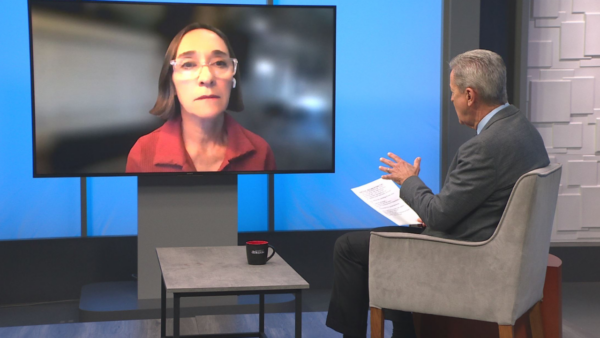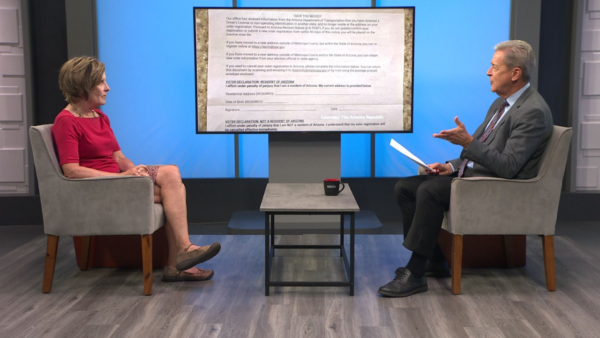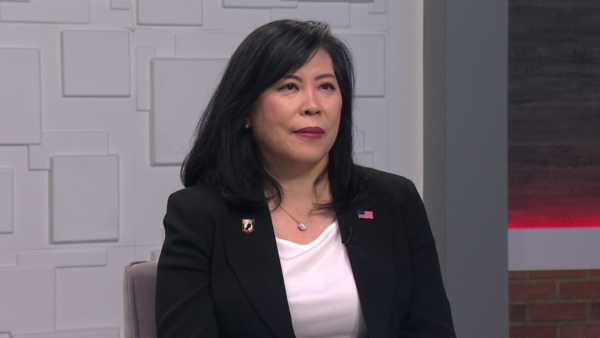The Nature Conservancy�s Arizona Director discusses an initiative petition drive his organization has launched. If successful, it will place a proposition on November�s general election ballot asking voters to amend the State Constitution to allow 570,000 acres of state trust land to be set aside for permanent conservation. More than ten million acres of trust land were given to Arizona by the federal government at statehood. They�re held in trust, leased and sold by the State Land Department to raise money for public schools and other beneficiaries.
Initiative application
Ted Simons:
Petitions are now being circulated for an initiative to conserve 570,000 acres of state trust land. I'll talk to the leader of the effort in a moment. but first, David Majure explains why this kind of conservation requires voter approval.
Bruce Babbitt:
Planning has for the most part in Arizona kind of been focused on the next subdivision, the details regarding the next shopping center, kind of inward-look at development piece by piece by piece. What gets lost in that is a larger vision.
VO- David Majure:
Former Arizona Governor and U.S. Secretary of interior Bruce Babbitt visited the Grand Canyon last October to share his vision of Arizona with about 150 participants in the 91st Arizona town hall. The topic of the meeting was land use. The goal to decide how Arizona should plan for future growth.
Bruce Babbitt:
People come to Arizona for reasons. They come because of the pages of Arizona highways. It's about the out of doors, about the distant views, the red rocks, the canyons, the Sonoran Desert. but with 6 million people going on 15 in the lifetimes of many residents, you know, we're just destroying the very values that draw people here and that make it such an attractive place.
VO- David Majure:
One of the most challenging land use issues is the management of state trust lands. More than 10 million-acres were given to Arizona by the federal government at statehood. They're held in trust, leased and sold by the state land department to generate money for public education and other beneficiaries.
Steve Betts:
If you look at our urban areas, Maricopa County and pima county in particular, Phoenix and Tucson, if you look at those areas we now have hundreds of thousands if not almost 1 million-acres, 1 million acres of state trust land that is urbanized, that are literally leap-frogged over by growth that we have passed over because we can't get those state trust lands moved to market. And so what we've been talking about in this session is how to make the state land department a real asset manager so they can make more money, so they can bring more of those lands to market so we don't leap-frog and sprawl over the state trust lands in the future.
Carolyn Campbell:
I think an absolutely essential piece to state trust land reform is the ability to purchase and conserve state trust lands for conservation without going to auction. So the communities, local governments and conservation groups can preserve lands. The other thing would be an evaluation process of which lands should be released for development, which lands should be preserved in perpetuity.
VO- David Majure:
Federal law and the state constitution mandate that trust lands be leased or sold at auction to the highest and best bidder. Conserving these lands or changing how they're managed typically requires a constitutional amendment and permission from congress. In the past, that's something Arizona voters have refused to authorize the state to pursue. But the Arizona state conservancy is trying again. It hopes to place a measure on the ballot in November that sets aside those 570,000-acres of state trust land for permanent conservation.
Ted Simons:
Joining me to talk about the trust land initiative is Patrick Graham, Arizona Director of the Nature Conservancy. Patrick, thank you for joining us, thanks for being on the show.
Patrick Graham:
Glad to be here Ted.
Ted Simons:
Conserving Arizona's land and water initiative, what is it?
Patrick Graham:
It's an effort to help modernize Arizona's state trust land reform laws. And basically it would protect 570,000-acres of Arizona's most important lands and waters. It would help ensure funding for Arizona's classrooms, and it would help improve the management of the remaining 9.3 million-acres of trust lands in Arizona.
Ted Simons:
570,000-acres permanently off limits?
Patrick Graham:
Permanently protected from development. These are important lands like areas around Castle Hot Springs, Superstition Mountains, McDowell, Sonoran preserves.
Ted Simons:
Are they concentrated in one general area or all over the state?
Patrick Graham:
It's really all over the state. I think in most every county in the state there would be some lands that would be protected.
Ted Simons:
I know there was supposed to be a deal, or at least a deal was being worked on between lawmakers and the governor. What happened there, and can that kind of deal still be worked out?
Patrick Graham:
Well, that was negotiations that started about nine months ago, and we were watching that to see if those negotiations produced a bill and they did not. And the governor announced that they'd reached an impasse. And it wasn't until that happened that we pulled together a group of people and said, "Let's see if we can get something. We think this is too important of an issue to wait until 2010.
Ted Simons:
Impact fees, I know -- at least from what I understand -- were a major part of the concern regarding developers, home builders and such. Why was that a no go?
Patrick Graham:
Well, we weren't at the table so I can't really address the issues that were there. This is kind of a new issue. It hadn't been there in the previous five or six years so I can't say for sure. We definitely believe its part of the existing statutes. And so our constitutional amendment wouldn't address it because it's not in the constitution. So that would be an issue that could still be addressed by the legislature in the future. But this measure deals just with the changing of the constitution. We need to bring it up-to-date, you know. The constitution that guides us was put in place almost 100 years ago. And things have changed.
Ted Simons:
The idea of selling for fair market value instead of the highest value you can get, explain again why that would be a good thing for Arizona.
Patrick Graham:
One of the things that the Arizona preserves initiative created a process where communities could buy land for conservation. What happened is that challenged and it was termed that for that to move forward they would actually have to bid. So you could potentially have a community trying to conserve land having to bid against a developer. That uncertainty would make it difficult to protect these important areas. So what this would do would ensure that those lands could be sold for conservation at their appraised fair market value. So the trust gets the value but you don't have the risk.
Ted Simons:
You don't have the risk, but some would argue you don't get the money, either.
Patrick Graham:
Well, that's interesting. Because three of the last sales have been offered up, no one bid on. So what the land department appraises it at, it cuts both directions. When you're in an up market maybe they're not keeping up but in a down market they may be actually appraising it at more than it's worth. So it's not a given that when they establish the appraised value that someone's going to bid it up.
Ted Simons:
How do you argue against those, though, who say that if it's not the highest value, if it's not done again to help with education and pay for certain things, that you're undermining the trust by preserving this land?
Patrick Graham:
Yeah. The land, the 570,000-acres that are set aside here are again some of Arizona's most important lands and waters. There is more than adequate lands left. There's 9.3 million acres in total to meet the future growth needs for the next 50 years and beyond. There's over 200,000 acres of land just within the urban boundaries of Tucson and Phoenix, many of which are suitable for development. In fact, this measure would allow the legislature to put funding into the land department to help get those lands out into the market, and really it would help us avoid some of the sprawl been facing in the past.
Ted Simons:
And some developers I understand are actually for this idea because developments would then be up against preserved areas and thus increasing the value of those developed lands.
Patrick Graham:
Right. Setting these lands aside does increase the value of the remaining lands. That's definitely one benefit. The other is that when you get the development in closer you don't have all the infrastructure costs. So that's a benefit to development as well as to the commuters. They don't have the long drives.
Ted Simons:
Yeah. I want to go back to the concept, though, of undermining the trust. Because again, the bottom line here is that we've got the land, we want to sell it for as much as we possibly can. If successful to get this thing on the ballot you're going to have to explain this to a lot of folks that we try to sell this land for as much as we can except for this land. Can you do that? Is that easily enough explained?
Patrick Graham:
The public really thinks these lands should be protected. And it's fair to -- the lands that -- the 570,000 acres would be set aside permanently in the trust. It would continue to generate revenue for the trust. So the value remains there for the trust. for the lands that are sold for conservation, they would be sold at their fair market value, just as your home or your property might be sold, you would expect that appraised value would be a fair, reasonable expectation. What the community gets in addition is they get the open space for the recreation. So it provides a balance. We think the people of Arizona don't want to have to choose between a healthy economy and a healthy environment. And through this measure they won't have to. They get both.
Ted Simons:
So if some land goes for less than it might have at auction, that's considered what, an investment on preserving Arizona land?
Patrick Graham:
They're still getting the full fair market value of the lands. So yeah, getting a good price for the land. And quite frankly it's just sitting there now. Without this measure, there is hundreds of thousands of acres that could be revenue basically that could be going to the schools that's not going there at all.
Ted Simons:
Two and a half months now to get, what a couple hundred thousand signatures?
Patrick Graham:
About 300,000 signatures. the delay in having the action taken by the legislature put it right about to the edge of where we need to be. But we're confident the folks out gathering the petitions are once they understand what it is. So we're feeling very good.
Ted Simons:
Alright Patrick, thanks so much for joining us. We appreciate it.
Patrick Graham:
Thank you.
Patrick Graham:Arizona Director, Nature Conservancy;

